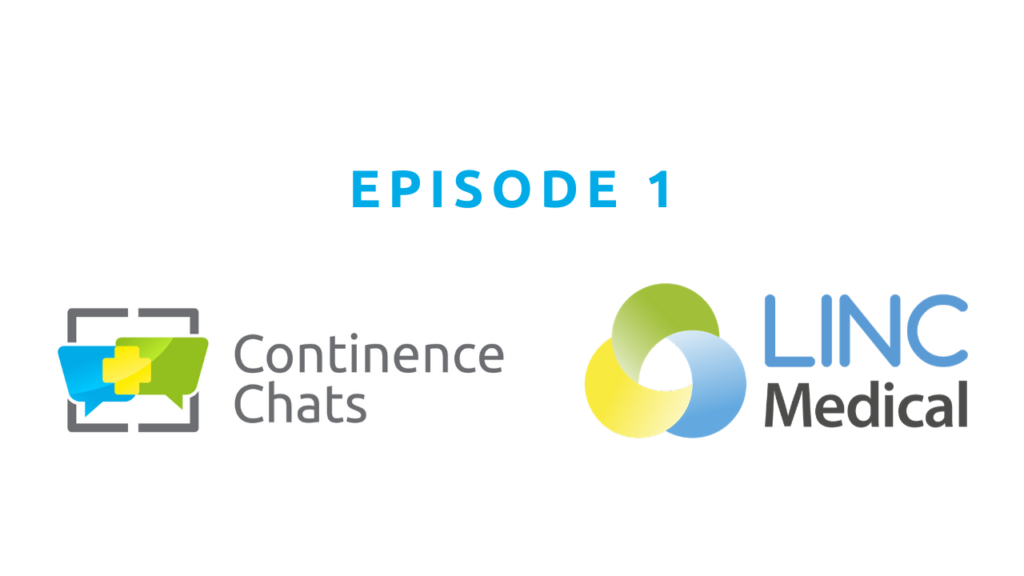In Episode 4 of #ContinenceChats we talked to Marion. She is a wheelchair who suffers with continence issues and shared her inspiring story with some helpful tips for other people who may be suffering from similar conditions as her.
Blog
“How a Suprapubic Catheter Gave Me Back Control Of My Life” | #ContinenceChats Episode 3
#ContinenceChats are informal chats with catheter users who share with us their stories, tips and challenges of living with a catheter.
Three essential steps to living happily with a suprapubic catheter
The biggest moment in anyone’s catheter journey is when you transition from thinking of a catheter as a short-term solution to a long-term solution. You can bear it short term as the catheter will be removed. It’s the long term – knowing you have to deal with it day in and day out that’s the harder part. Adapting to life with a catheter takes time. Here I share the things I wished I’d known when I first had to make room for a catheter in my life. 1. Get the right catheter equipment Having the right equipment is so important. I knew so little about different catheters, drainage bags and straps. My very first night, I had to wake every couple of hours as I hadn’t been given a night bag. I didn’t know they existed! Waking every few hours to empty a leg bag is not a long-term strategy! During the day, I used to walk around with my catheter bag swinging around my ankles until I found you could get different lengths of leg bag. Also, I wasn’t advised how to secure it, and it was painfully precarious, moving when I moved, until I learnt to use a…
Read MoreLife As a Physiotherapist With a Catheter | #ContinenceChats Episode 2
#ContinenceChats are informal chats with catheter users who share with us their stories, tips and challenges of living with a catheter.
How to find the products that are right for you – #ContinenceChats Episode 1
#ContinenceChats are informal chats with catheter users who share with us their stories, tips and challenges of living with a catheter.
5 useful tips for catheter users during the lockdown
You might be worried about COVID-19 and how it could affect your life, especially if you are a catheter user or carer. Here are our best tips for lockdown!
What should I expect when having a suprapubic catheter inserted?
Welcome back to LINC Medical’s series of blogs designed to help catheter users and their carers. Many people are worried when they are told they need a suprapubic catheter. You may know someone who has had one or been told stories about how it feels. What is involved? Will it hurt? These concerns can cause anxiety, making your decision to go ahead with a suprapubic catheter harder to resolve. The following information should help you to understand what to expect with a suprapubic catheter and ease the process of making your decision whether to have one or not. A suprapubic catheter is a sterile tube passed through your abdomen directly into your bladder to help your bladder empty. People usually are offered one if they are unable to pass urine in the normal way although it is common to have a urethral catheter first. The procedure A suprapubic catheter is first inserted by a doctor or advanced nurse practitioner in a hospital or clinic setting. You are usually awake for the procedure but will be given some local anaesthetic to numb the area. You usually are asked to lie as flat as you can on your back and may have…
Read MoreHelp! My catheter is not draining!
Welcome back to LINC Medical’s series of blogs designed to help catheter users and their carers. Do you have problems with your catheter draining slowly or not at all? This is a common issue that affects many catheter users but can easily be avoided using a few simple steps, outlined in this blog. From time to time you may notice that your catheter seems to be draining slowly or not at all. It is always a good idea at this time to gently and slowly move the catheter around to see if this helps with the flow of urine. If that doesn’t help, go through the following checklist: • Straighten out any bends or kinks in the tubing • Make sure the catheter bag is below the level of your bladder • Physically move yourself around, by going for a walk for example • Make sure you have been drinking enough fluids • Take a look at the catheter tube and make sure there is no grit or sediment blocking it If these steps do not work and you do not feel dehydrated then your catheter may be blocked if it is not draining. A blockage would mean that your…
Read MoreYour first few days with a catheter
Welcome back to LINC Medical’s series of blogs designed to help catheter users and their carers. Today’s blog is for those looking for guidance in their first few days living with a catheter. Being at home with a catheter for the first time can be nerve wracking. It is important to note that a small amount of blood in the urine or around the insertion site (if it is new) is perfectly normal. Bleeding should only be a concern if your catheter is already a few days old. Bladder cramps are another catheter side effect that are completely normal in the beginning. They should stop after a few days and are usually mild enough that they can be treated with simple pain relief like paracetamol. If you feel your bladder cramps are not stopping, if you feel unwell or if you have any other symptoms then contact your nurse or doctor. Some urine leaking is usually a result of these initial bladder cramps or spasms and should not worry you. In the unlikely event that your catheter starts leaking heavily or falls out completely then you will need to have a new catheter inserted. We hope you found this blog…
Read More5 Essential steps to change a leg bag
Welcome back to LINC Medical’s series of blogs designed to help catheter users and their carers. Changing your leg bag Leg bags should be changed every 5-7 days. Longer times between leg bag changes helps to reduce the risk of infection getting into the closed drainage system. Changing your leg bag safely involves 5 easy steps: 1. Wash your hands with warm soapy water and dry them 2. Grip the catheter at the join between the drainage tube and the inflation tube and grip the leg bag above the connector. Rotate the catheter gently whilst pulling away from the connector. 3. Take off the cap from the new bag and dispose of the old one 4. Gently but firmly push in the new bag into the catheter. Be careful not to touch the open catheter end or the connector on the new drainage bag. Once connected wash your hands again. 5. Make a note of the date you changed your leg bag on the bag date box, and pop a note in your calendar to remind you to change your leg bag after 5-7 days. Troubleshooting your leg bag Sometimes you might notice that yor leg bag is not filling.…
Read More










